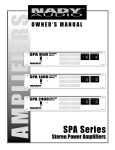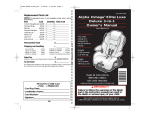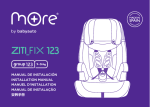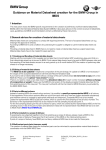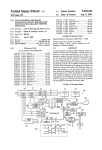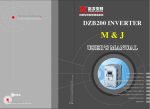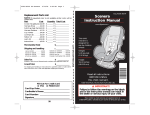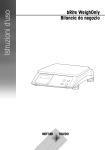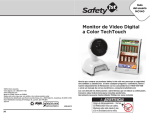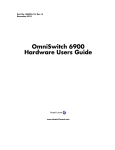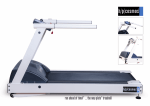Download View - Creciendo
Transcript
4358-5836 Elite SF1 EOU.indd 1-2 12/17/13 4:44 PM A. Before You Begin.................................Pages 3-8 E. Installing Rear-Facing ....................... Pages 38-46 A-1 Thank You... A-2 Registration and Safety Notices A-3 Understanding Your Child Restraint E-1 Preparing to Install Rear-Facing E-2 Preparing to Install LATCH Rear-Facing E-3 Install Rear-Facing with LATCH E-4 Install Rear-Facing with Vehicle Belts B. Safety Information........................... Pages 9-10 B-1 Vehicle Seating Position B-2 Installation in Vehicle B-3 Child Restraint Use C. Basic Use .............................................Pages 11-28 F. Installing Forward-Facing C-1 Choose Position for Your Child C-2 Preparing Child Restraint to Fit Your Child C-3 Securing Child in Child Restraint C-4 Removing Child From Child Restraint C-5 Accessories C-6 Reclining Child Restraint C-7 Removing Harness System C-8 Installing Harness System C-9 Removing Seat Pad for Cleaning F-1 Preparing to Install Forward-Facing F-2 Adjusting Top Anchorage Strap (Tether) Pages 47-54 F-3 Preparing to Install LATCH Forward-Facing F-4 Install Forward-Facing With LATCH F-5 Install Forward-Facing with Vehicle Belts D. General Vehicle Installation .....Pages 29-37 D-1 D-2 D-3 D-4 D-5 D-6 Understanding Your Vehicle Vehicle Seating Position Choosing LATCH or Vehicle Belts Knowing Your Vehicle Belts Using Locking Clip Installing on Aircraft 1 4358-5836 Elite SF1 EOU.indd 3-4 G. Installing Belt-Positioning Booster Pages 55-58 G-1 Preparing to Install Belt-Positioning Booster G-2 Installing Using the Lap and Shoulder Belts 2 12/17/13 4:44 PM A-2 Registration and Safety Notices Thank you for choosing this car seat, referred to throughout this manual as a child restraint. The DJG family is committed to creating a child restraint with the most comfort and convenience available today. Please complete the postage-paid registration card that came with your child restraint, and send it to us. Child restraints could be recalled for safety reasons. You must register this restraint to be reached in a recall. Send your name, address, email address if available, and the restraint’s model number and manufacturing date to: Remember, parents are a child’s first teachers and examples. If you always buckle your seat belt, your child will think it is the natural thing to do. Make it a firm rule that the vehicle does not go until everyone is buckled up. Make no exceptions. No one can predict if use of a child restraint will prevent injury or death in a particular crash. However, combined with careful driving, proper use of a child restraint can lower a child’s risk of injury or death in most crashes. Your child’s safety is worth the time it will take to read and follow these instructions. After reading, if you still have questions or have any problems with this child restraint, please contact our Consumer Relations Department at: Dorel Juvenile Group, Inc. PO Box 2609, Columbus, IN 47202-2609 Attn: Consumer Relations A. Before You Begin A-1 Thank You... or call 1-800-544-1108 or register online at www.djgusa. com/registration/carseat/us. For recall information, call the U.S. Government’s Vehicle Safety Hotline at 1–888–327–4236 (TTY: 1–800–424–9153), or go to http://www.NHTSA.gov Dorel Juvenile Group, Inc. Website: www.djgusa.com Fax: 1-800-207-8182 Mailing Address: Dorel Juvenile Group, Inc. Manufacture Date Model Number P.O. Box 2609 Columbus, IN 47202-2609 Telephone: 1-800-544-1108 7 A.M. to 6 P.M. EST M-TH 7 A.M. to 4:30 P.M. EST FRI On the back of the shell there is an expiration date for use of this child restraint. Do not use this seat after the expiration date. If you don’t have the card or if your address changes, you will find the model number and manufactured date on the label located on side of plastic shell. Para recibir las instrucciones en español, llame al 1-800-544-1108 o solicitarse por escrito al dirección por arriba. 3 4358-5836 Elite SF1 EOU.indd 5-6 4 12/17/13 4:44 PM Front View A. Before You Begin A-3 Understanding Your Child Restraint Harness System Detail A. B. C. PUSH I. J. D. K. L. F. E. G. M. N. O. H. A. Headrest/Harness Height Adjustment Levers B. Adjustable Headrest F. Harness Release Lever (under flap) I. Chest Clip G. Harness Tightening Strap K. Buckle Tongue H. Recline Lever L. Buckle J. Harness Straps C. Infant Insert (on select models) M. Harness Guides D. Lumbar Support (on select models) O. Buckle Strap Slots N. Buckle Strap E. Cup Holder (on select models) 5 4358-5836 Elite SF1 EOU.indd 7-8 6 continued on next page. 12/17/13 4:44 PM G. L. A. Before You Begin Side View Back View K. A. H. M. I. B. C. J. F. D. E. A. Top Anchorage (Tether) Strap B. Locking Clip (behind harness) G. Shoulder Belt Positioning Guide & Rear Facing Level To Ground Line C. Splitter Plate H. Rotating Armrests E. D. Instructions (in bottom of base) J. Rear-Facing Belt Path F. Non Removable Base K. LATCH Belt 4358-5836 Elite SF1 EOU.indd 9-10 M. Rear-Facing Level to Ground Lines I. Forward-Facing Belt Path E. Top Anchorage (Tether) Hook Storage 7 L. LATCH Storage 8 12/17/13 4:44 PM B-3 Child Restraint Use Failure to follow these warnings can result in the serious injury or death of your child. To help you recognize instructions which are most critical to your child’s safety, we use this symbol: Never take your child out of the child restraint while the vehicle is moving. Never leave child unattended. Placing your child in a hot child restraint may result in burns. B-1 Vehicle Seating Position Never place a child rear-facing in a seating position with an active frontal airbag. Check the vehicle owner’s manual for more information about air bag/child restraint use. For vehicles without a back seat, refer to your vehicle owner’s manual. B-2 Installation in Vehicle Do not use cut, frayed or damaged harnesses. Do not lubricate buckles and fasteners. Do not substitute parts or try to modify the child restraint in any way. Do not use any car seat accessory except those approved by Dorel Juvenile Group. B. Safety Information Do not use a child restraint with damaged or missing parts. Never allow any child to play with this child restraint; it is not a toy. Do not remove or cover up any of the warning labels or other labels on the child restraint. Read all instructions for additional warnings. Check the vehicle belt or LATCH belt before each use. Use only if the belt is tightened properly and securely. This child restraint should be securely belted in the vehicle even when not in use. In a crash or sudden stop, an unsecured child restraint could injure occupants. Do not use a child restraint that has been in a crash. You must get a new child restraint. 9 4358-5836 Elite SF1 EOU.indd 11-12 10 12/17/13 4:44 PM C-1 Choose Position for Your Child Your child’s height, weight and age determine how your child restraint should be placed in the vehicle. 5-40 lbs (2.3-18 kg) and 19-40 in. (48-101.6 cm) C-2 Preparing Child Restraint to Fit Your Child You MUST make these adjustments with your child before you install the child restraint in the vehicle. 1. Loosen Harness Rear-Facing using 5-point harness Child and child restraint are placed in the back seat, facing the back of the vehicle. 22-65 lbs (10.1-29 kg) and 34-52 in. (85.1-132.1 cm) and Over 1 Year Old 2. Release Chest Clip Press on chest clip release button and pull apart. 3. Unbuckle Harness Press red button. Pull buckle tongues out. Place harness straps out of the way. 40-100 lbs (18.1-45.4 kg) and 43-52 in. (110.1-132.1 cm) and Over 1 Year Old Belt-positioning booster using vehicle lap/shoulder belt combination Child and child restraint are placed in the back seat, facing the front of the vehicle. 5-point harness is removed. 11 4358-5836 Elite SF1 EOU.indd 13-14 C. Basic Use Forward-Facing using 5-point harness Child and child restraint are placed in the back seat, facing the front of the vehicle. Push down on the harness release lever (under flap on the front of restraint) while pulling out on the harness. 4. Place Child in Restraint Place the child’s bottom and back flat against the restraint. This will increase comfort and allow the harness straps to be properly tightened. 12 continued on next page. 12/17/13 4:44 PM 5. Check Buckle Position d. Reposition buckle location. Insert the buckle’s metal retainer through the desired slot. Make sure buckle is facing forward. Determine which of the available buckle positions will be comfortable and provide a snug fit for your child. 1 2 3 You MUST use the 1st or 2nd buckle strap slots when rear-facing. Any slot can be used for forward-facing. To Change Buckle Position e. Reach under seat between base and shell. Pull buckle’s metal retainer completely through pad and shell. a. Fully recline the child restraint. Reach under the seat between base and shell. b. Locate buckle’s metal Rotate metal retainer, then insert retainer up through the shell and pad. f. Pull up on buckle to make sure it is secured. The buckle must not pull out. C. Basic Use retainer under the shell. c. From the top, pull buckle free from shell and pad. Failure to place buckle’s metal retainer completely through pad and shell can result in serious injury or death. 13 4358-5836 Elite SF1 EOU.indd 15-16 14 continued on next page. 12/17/13 4:44 PM 6. Check Harness/Headrest Height 7. To Adjust Harness/ Headrest Height With child in the seat, check the location of the harness guide. Loosen harness straps. Rotate headrest/harness height adjustment levers inward. Move headrest to the proper height and lock into place Follow the guidelines below to determine the correct harness/headrest height. Rear-Facing Position Harness guide must be even with or just below the shoulders. If the harness is above the child’s shoulders with the headrest in the lowest position, do not use this child restraint. Harness guide must be even with or just above the shoulders. If the harness guide is below the child’s shoulders with the headrest in the highest position and the child weighs at least 40 lbs. (18.1 kg) and is over 1 year old, you must convert the seat to a belt-positioning booster. 15 4358-5836 Elite SF1 EOU.indd 17-18 Do not use this child restraint rearfacing if the top of your child’s head is above the top of the child restraint’s headrest. C. Basic Use Forward-Facing Position Make sure metal bar is locked into position. Failure to do this can result in serious injury or death. Do not use this child restraint forward-facing if the midpoint of your child’s head is above the top of the child restraint’s headrest. Make sure the harness height is correct for your child’s size. Failure to follow these steps can result in serious injury or death. 16 12/17/13 4:44 PM C-3 Securing Child in Child Restraint 4. Tighten Harness Pull on harness tightening strap to tighten harness snugly. 1. Position Harness Straps Over the Child’s Shoulders. NOTE: A snug strap should not allow any slack. It lies in a relatively straight line without sagging. It does not press on the child’s flesh or push the child’s body into an unnatural position. 5. Check Harness Tightness Try to pinch the harness at the shoulders. If you can pinch the harness strap, tighten more. If your fingers slip off, the harness is tight enough. 2. Buckle Harness 6. Position Chest Clip The chest clip must be placed at mid-chest (even with armpits) and away from the child’s neck. C. Basic Use Push each buckle tongue into buckle until you hear a “click”. Remember to always pull up on harness straps to make sure buckle is locked. For small infants, you may have to remove the harness covers. 3. Close Chest Clip Insert right half of chest clip into left half and snap together. Failure to fasten and tighten the harness system correctly and snugly can result in serious injury or death. 17 4358-5836 Elite SF1 EOU.indd 19-20 18 12/17/13 4:44 PM C-4 Removing Child From Child Restraint C-5 Accessories 1. Loosen Harness Rotating Armrests Press on harness release lever while pulling on harness straps above the the buckle to loosen. Pull out arm, rotate and lock into place. Infant Insert (on select models) Insert must not cover the infant’s face. Remove the insert for older babies and toddlers. 2. Release Chest Clip Press on release button and pull apart. Reverse to replace insert. Install Cup Holder (on select models) Pull pad off corner. Hook bottom of cup holder to edge of shell. Rotate cup holder up until it snaps into the hole on the shell. Replace pad. 3. Unbuckle Press red button on buckle to release the buckle tongues. Move harness away from child and remove child. 19 4358-5836 Elite SF1 EOU.indd 21-22 C. Basic Use To remove the insert, undo the fastening strips and slide the insert out. 20 continued on next page. 12/17/13 4:44 PM Lumbar Support (on select models) To remove the lumbar support, loosen harness system and pull the lumbar support out from behind the harness system. C-7 Removing Harness System Harness system MUST be removed to use this child restraint as a Belt-Positioning Booster. 1. Remove Harness Straps from Splitter Plate Fully loosen harness straps. Locate splitter plate on the back of the seat and unfasten the harness straps. C-6 Reclining Child Restraint 2. Store Splitter Plate This child restraint has 3 recline positions: 3 2 Raise headrest all the way up. Store splitter plate by pushing it through one opening and out the other. C. Basic Use Rear-facing - Recline restraint so that the level lines on shoulder beltpositioning guide are level with ground. 1 Forward-Facing - 2 Semireclined or 3 upright. NOTE: When forwardfacing, the recline position is to be used only to install the child restraint flush against the back of vehicle seat back. To Recline Pull out on handle. 1 3. Remove Harness Straps Pull harness through the slots from the front (1). 2 4 Unthread harness from the chest clip (2). 3 Unthread harness from the buckle tongues (3). For upright position, pull out on handle and position the child restraint upright. 21 4358-5836 Elite SF1 EOU.indd 23-24 Pull harness out of shell (4). 22 continued on next page. 12/17/13 4:44 PM Note: If you are removing the harness to use the child restraint as a belt-positioning booster, skip step 4 7. Remove Buckle from Child Restraint From the top, pull buckle free from shell and pad. 4. Remove Harness Guides Remove both lower harness guides in bottom of seat. From the back of the seat, locate the lower harness guides that are between the bottom of the seat and base. Remove both lower harness guides (A) in bottom of seat. Lower Harness Guides A Push harness guide lip toward outside of shell with one hand while pulling harness guide from the front with the other. C-8 Installing Harness System Fit the buckle’s metal retainer through the slot in the seat. Red button must face out. 5. Locate Buckle’s Metal Retainer Fully recline the child restraint. Reach under the seat between base and shell. Pull buckle’s metal retainer completely through pad and shell from bottom of seat. C. Basic Use 1. Install Buckle 6. Insert Metal Retainer Through Shell and Pad Locate buckle’s metal retainer under the shell. 2. Check Buckle Pull up on buckle to make sure it is secured. The buckle must not pull out. Rotate metal retainer, then insert retainer up through the shell and pad. 23 4358-5836 Elite SF1 EOU.indd 25-26 24 continued on next page. 12/17/13 4:44 PM 3. Thread Harness Strap NOTE: For easier assembly, remove the harness guides. See section C-7, step 4. Thread the harness down through slot on left side of plastic shell (1) and up through slot on right side (2). 1 2 NOTE: Make sure sewn end of the harness strap loop faces the buckle before starting. 6. Thread harness straps 6 through each buckle tongue (4). Thread the chest clip (5). Do the same to the other harness end. Do Not twist harness. 5 Push harness ends through slots in headrest (6). 4 7. Thread Harness OVER Metal Bar Take both ends of the harness and make them even in length. NOTE: Make sure harness tightening strap is between the harness strap and shell as shown. 8. Attach Harness Straps to Splitter Plate 4. Thread Harness Guides on Harness Strap Slide one harness guide on each harness strap end. 5. Secure Harness Guides Press harness guides into the holes in the pad and shell. 25 4358-5836 Elite SF1 EOU.indd 27-28 C. Basic Use Fit loops on harness ends completely on the splitter plate. Harness MUST be threaded over the metal bar. Harness system must be reattached correctly. Buckle’s metal retainer must be completely through pad and shell. Failure to follow these warnings can result in serious injury or death. 26 12/17/13 4:44 PM C-9 Removing Seat Pad for Cleaning You must remove the harness system to remove the pad. Do not use child restraint without the seat pad. 1. Remove the Elastic Straps Release the elastic straps on the back and under side of the seat. Replace seat pad by reversing order; put pad on headrest. Starting from bottom of child restraint, slip pad on shell; pull harness tightening strap through pad. Make sure pad is under headrest. Attach all of the elastic straps. Rethread harness (see section C-9). 2. Remove Harness Guides Lower Harness Guides C. Basic Use Remove both lower harness guides in bottom of seat. See section C-7, step 4 to remove the harness guides. 3. Remove Seat Pad Adjust backrest to lowest position. Pull pad off the top of seat and around headrest. Slip off armrest and headrest pads. Cleaning Seat Pad Hand wash pad with warm sudsy water, rinse clean and air dry. Spot clean the harness straps. Do not use bleach or use other harsh cleaners. Do not dry clean. 27 4358-5836 Elite SF1 EOU.indd 29-30 28 12/17/13 4:44 PM D-1 Understanding Your Vehicle D-2 Vehicle Seating Position Your vehicle’s features may be considerably different than those pictured here. Consult your vehicle owner’s manual to help identify your vehicle’s specific features and locations. Some seating positions in your vehicle may not be safe for this child restraint. Some vehicles do not have a seating position that can be used safely with this child restraint. If you are not sure where to place the child restraint in your vehicle, consult your vehicle owner’s manual or contact Dorel Juvenile Group Consumer Relations Dept. Seat Bight Air Bags Anchor Brackets Consult your vehicle For Top Anchorage owner’s manual for Strap (Tether) all air bag locations. (Forward-Facing Only) Vehicle Seat Belts Consult your vehicle owner’s manual for vehicle belt use. LATCH Anchors Located in the seat bight. To help protect your vehicle seat’s upholstery from damage, use a single layered towel underneath and behind child restraint. To avoid your child being seriously burned, take the following precautions: 1. Park in the shade or where sun does not directly hit the child restraint. 2. Cover the child restraint with a sheet or blanket when not in use. 3. Check for hot seat and buckles before placing child in child restraint. 29 4358-5836 Elite SF1 EOU.indd 31-32 Use the child restraint only on vehicle seats that face forward. Do not use on seats that face the sides or rear of the vehicle. Safety Tip: Children are safer when properly restrained in rear seating positions than in the front seating positions. According to National Highway Traffic Safety Administration information, children in rear seating positions are statistically safer, whether you have air bags, advanced air bags, or no air bags at all. D. General Vehicle Installation Safety Tip: Never place a child rear-facing in a seating position with an active frontal airbag. This can result in serious injury or death. 30 12/17/13 4:44 PM D-3 Choosing LATCH or Vehicle Belts LATCH Anchor Bars The LATCH System LATCH (Lower Anchors and Tethers for CHildren) is a universal system for installing child restraints without using vehicle seat belts. The LATCH system can ONLY be used in vehicles that have the LATCH anchor bars installed and designated LATCH seating positions. Most vehicles manufactured after September 2002 are equipped with LATCH. Check your vehicle owner’s manual to see which seating positions may be equipped with the LATCH system. Vehicle Belts See next page and check your vehicle’s owner’s manual for specific instructions. Do not use both the LATCH belt and vehicle belt at the same time. Vehicle Belts • Automatic/Passive vehicle seat belts You MUST have a lap belt to install any child restraint. An automatic (passive) shoulder belt may or may not have a separate lap belt. Consult your vehicle owner’s manual. • Vehicle belts in center of the door or side panel You must move the child restraint to another seating location. Consult your vehicle owner’s manual. • Vehicle belts that are in front of the seat bight You may need to move the child restraint to another seating location. Consult your vehicle owner’s manual. • ELR (Emergency Locking Retractor) vehicle belts These lap and shoulder belts only lock in a sudden stop or crash, and do not properly secure a child restraint alone. Consult your vehicle owner’s manual. To learn if you have this type of belt, gently pull the belt all the way out of the retractor (spool), let it return several inches, then pull on it again. If it moves freely, it is an ELR belt. If it is locked and will not allow any more belt to come out, it is a switchable retractor. If you have an ELR lap and shoulder belt, review the “Vehicle Latch Plate” section to see if you need a locking clip. D-4 Knowing Your Vehicle Belts Review your vehicle’s owner manual for vehicle seat belt use with child restraints. This is your best source for information concerning your vehicle. 31 4358-5836 Elite SF1 EOU.indd 33-34 ELR lap-only belts MUST NOT be used with this child restraint. 32 D. General Vehicle Installation If LATCH is not an option, you must use the vehicle seat belt system to install the child restraint. There are some vehicle belts that will not work with a child restraint or will require special attention. Not all vehicle belts will work with this child restraint. This child restraint must be tightly locked in place at all times, during travel. You must determine if your vehicles belts are compatible with this child restraint. continued on next page. 12/17/13 4:44 PM • Switchable retractor These belts switch from ELR to ALR (Automatic Locking Retractor). You must have the vehicle belts in the locking mode to use them. Follow the instructions in the installation sections. • ALR (Automatic Locking Retractor) These belts lock after pulling the webbing out and letting the belt go back into the retractor an inch or two. Follow the instructions in the installation sections. 1. Place Child Restraint in Vehicle Rear-Facing With child restraint in the most reclined position, place child restraint in the back seat. Check for proper recline. NOTE: Store top anchorage hook (tether) on the base. See section E-1. For children between 5-22 lbs (2.3-10 kg), the bottom level to ground line MUST be level to the ground. For children 22-40 lbs (10.1-18 kg) and can sit up unassisted, rotate the child restraint between the 2 level to ground lines. Start by making the bottom level to ground line level, then rotate seat up. DO NOT rotate past the top most upright level to ground line. Adjust child restraint if needed. You may need to place a A large rolled towel(s) or foam pool noodle(s) (A) under the front of the child restraint to help achieve the correct recline. Check often to be sure padding is still in place and the vehicle belt is tight. DEA WAR INJU TH NIN RY or SER G! • Use can IOUS occ weighonly with poun betw childr ur: een en and ds (18.1 40-10 who betwwhos -45.4 0 43-52een e heigh kg) witho (110. inche t is vehic ut and 1-132 s syste le’s harne this m lap ss. 1 year who .1 restra boostwhen and • Use of are cm) • Followint er restrashoul only age over with seat. iningder the restra locate int all a vehic• Secu thebelt and instru Belt d on the in the ctionsle belt.re thischild in -Po back writte on this child 43-5 40-100 sitio of the n instru child base. ctions 2 inch lbs nin es (18.1 g Boo (110 -45.4 .1-13 kg) ster 2.1 cm) 4360- xxxx Vehicle Latch Plates Do not use both the LATCH belt and vehicle belt at the same time. Most Upright Level to Ground Line Rear-Facing For Children 22-40 lbs (10.1-18 AND can sit up unassisted kg) Recline range is between the 2 level to ground lines. Review instruction manual. • Check the Latch Plates Grasp the tongue portion of the latch plate (the part that goes inside the buckle) and pull straight out, inline with the lap belt. If the latch plate does not slide up and down the vehicle belt, you have a locking latch plate. You should not need to use a locking clip. Consult your vehicle owner’s manual. Locking Latch Plate Sliding Latch Plate Most Reclined Level to Ground Line ing Rear-Fac5-22 lbs For Children kg) Be (2.3-10 MUST Line Bottom with the Level Ground. DE WA INJ ATH RN UR or ING G! IN OU r: o RN RI cu wh WA or SE n oc ldren 100 H ca h chi 40- 4 kg) is AT en 45. ght ) DE JURY y wit we(18.1- hei cm r onl bet ose IN igh nds wh en hes 2.1 ove • Usewe pou and we 52 inc -13 o are bet 43- 0.1 wh age the (11 and r of y t ld in ld onl bel chi chi 1 yeaUse er the this ld s uld s. • sho ning ure t. chi tion nes and trai Sec bel this truc t har lap res t. • icle s on ins e. ter hou ’s en sea veh tion tten bas os wit icle whster h a truc wri of the Bo kg) ) veh temboo wit ins the k ng .4 cm nt all in sys this trai low and the bac ni .1-45 2.1 -13 io res Fol nt on sit (18 0.1 • trai d res ate Po lbs (11 loc lt- 0 s Be 40-10 inche -52 43 • Use Y ca SE ! n ocRIOUS wei only gh cu pou betwith r: chil andnds (18ween dre n bet who .1-4 40-100who 43- ween se heig5.4 kg) with veh out (11 52 inch ht is 0.1 sys icle har this tem ’s lap nes 1 and -13 es res boo whe and s. • year who 2.1 cm • trai ster n sho Use of are res Follownt with sea restrai ulde only age over ) loca traint all a t. • ning r belt the ted and inst veh Sec Be on the in theructionicle belturethe chil lt-Po bac wri s . this d in k ttenon this child 43- 40-100 sit ion of the basinstrucchil 52 d inc lbs ing e. tion hes (18 s (11 .1-4 Boos 0.1 5.4 -13 kg) ter 2.1 cm ) Directions below describe installing the child restraint rearfacing. Same steps apply for forward-facing, except install the restraint forward-facing and thread the vehicle belt in the forward-facing belt path. 33 4358-5836 Elite SF1 EOU.indd 35-36 Line Recline range the 2 level to is between ground Review instruction lines. manual. Level to Ground Line ing Rear-Fac5-22 lbs For Children kg) (2.3-10MUST Be Line Bottom with the Level Ground. Most Uprigh t Level For Childr Rearto Groun d Line AND en 22-40Facing can Reclin sit up lbs (10.1 -18 kg) the 2 e range unassisted level is Review to xxx 0-x 436 betwe instrucground en lines. tion manua l. Most Reclined Level to Ground Line Rear-Facing For Children 5-22 lbs (2.3-10 kg) Bottom Line MUST Be Level with the Ground. Most Upright Level to Ground -xxxx t-Po BACKE WRITTESON CHILD NINSTHISC 43-5 40-100 sitio OFTHEBAS TRUCTIHILD 2 inch lbs nin E ONS es (18.1 g Boo (110 -45.4 .1-13 kg) ster 2.1 cm) 4360 A locking clip will not fix all types of seat belt problems. Review section D-4 and your vehicle’s owner manual for vehicle seat belt use with child restraints. The locking clip is located on the back of the seat. Level to Ground Rear-Facing For Children 22-40 AND can sit lbs (10.1-18 kg) up unassisted Most Reclined Line Rear-Facing For Children 22-40 lbs (10.1-18 AND can sit up unassisted kg) Recline range is between the 2 level to ground lines. Review instruction manual. Most Reclined Level to Ground Line ing Rear-Fac5-22 lbs For Children kg) Be (2.3-10 MUST Line Bottom with the Level Ground. 34 D. General Vehicle Installation D-5 Using the Locking Clip Most Upright 436 0-x xxx S If the latch plate slides up and down on the belt, and you have an ELR retractor, you MUST use a locking clip to install the child restraint. You may not need to use the locking clip with a switchable or ALR retractor. Consult your vehicle owner’s manual. continued on next page. 12/17/13 4:44 PM 2. Thread Vehicle Belt 6. Attach Locking Clip Thread both portions of the vehicle belt onto the locking clip, as close to the latch plate as possible. Thread the vehicle lap/ shoulder belt combination through the rear-facing belt slot. 7. Position Locking Clip 3. Pull Vehicle Belt Across Position locking clip about 1 in. (2.5 cm) from vehicle belt’s latch plate. Child Restraint 8. Rebuckle Vehicle Belt Push down firmly on the child restraint and while pulling on the shoulder belt to tighten. 9. Check Belt Tightness 5. Locate Locking Clip Location Grasp both vehicle belts together just behind the latch plate and unbuckle. NOTE: If the latch plate ends up just at the belt path opening, grasp the belts on the opposite side of the child restraint, as close to the latch plate as possible. 35 4358-5836 Elite SF1 EOU.indd 37-38 Grasp the child restraint at the belt path with one hand. Push and pull the child restraint from side to side, forward and back. The child restraint should not move more than 1 inch. NOTE: If it moves more than an inch, redo the steps 5 through 9 again or try another seating location. Recheck the recline angle to make sure it is reclined according to your child’s weight. Repeat steps if not reclined correctly. Remove the locking clip when the seat belt is not being used with a child restraint. D. General Vehicle Installation Thread vehicle seat belt under pad in front of 1 2 buckle strap to the opposite side. Buckle vehicle belt. Do not place vehicle belt over child’s legs. NOTE: The buckle MUST be in the 1st or 2nd buckle strap slots when rear-facing. Any slot can be used for forward-facing. 4. Tighten Vehicle Belt 36 12/17/13 4:44 PM This restraint is certified for aircraft use only when used with the internal harness. This child restraint is NOT certified for use in aircraft when used as a beltpositioning booster, because aircraft seats do not have shoulder belts. E-1 Preparing to Install Rear-Facing 5-40 lbs (2.3-18 kg) and 19-40 in. (48-101.6 cm) Rear-Facing using 5-point harness E. Installing Rear-Facing D-6 Installing on Aircraft Use only on forward-facing aircraft seats. Follow instructions for vehicle installation. Contact the airline their specific policies. LATCH Belt Lap/Shoulder Belt Lap Belt Never place a child rear-facing in a seating position with an active frontal airbag. This can result in serious injury or death. This child restraint must always face the rear of the vehicle and be in the fully reclined position when the child is less than one year old. 37 4358-5836 Elite SF1 EOU.indd 39-40 38 12/17/13 4:44 PM E-3 Install Rear-Facing with LATCH 1. Pull Pad Off Corners of Child Restraint Pull the seat pad off the front corners of shell. 2. Routing LATCH Belt Insert the hook with adjuster through the rear-facing belt path. Do not use the LATCH system along with the vehicle lap or lap/shoulder belt. Check LATCH belt before each use. Use only if the belt can be tightened properly and securely. Attach the top anchorage hook (tether) to the base when used rear-facing. Failure to follow these warnings can result in serious injury or death. E. Installing Rear-Facing E-2 Preparing to Install LATCH Rear-Facing 1. Store Top Anchorage Hook (Tether) Attach the top anchorage hook (tether) to base as shown. Tighten tether to remove the slack. 3. Pull Hook Across to Opposite Side 1 Reach under pad and pull the LATCH hook across the shell. LATCH belt MUST be under pad and in front of buckle strap. 2 NOTE: You must use the 1st or 2nd buckle strap slots when rear-facing. Note: Review your vehicle’s owner manual for LATCH belt use. 2. Fully Recline and Place Child Restraint in the Back Seat Rear-Facing DEA WAR INJU TH NIN RY or SER G! • Use can IOUS occ weighonly with poun betw childr ur: een en and ds (18.1 40-10 who betwwhos -45.4 0 43-52een e heigh kg) witho (110. inche t is vehic ut and 1-132 s syste le’s harne this m lap ss. 1 year who .1 restra boostwhen and • Use of are cm) • Followint er restrashoul only age over with seat. iningder the restra locate int all a vehic• Secu thebelt and instru Belt d on the in the ctionsle belt.re thischild in -Po back writte on this child 43-5 40-100 sitio of the n instru child base. ctions 2 inch lbs nin es (18.1 g Boo (110 -45.4 .1-13 kg) ster 2.1 cm) Corners For children between 5-22 lbs (2.3-10 kg), the bottom level to ground line MUST be level to the ground. 4360xxxx 4. Replace Pad Over Most Upright Level to Ground Line Rear-Facing For Children 22-40 lbs (10.1-18 AND can sit up unassisted kg) Recline range is between the 2 level to ground lines. Review instruction manual. Most Reclined Level to Ground Line ing Rear-Fac5-22 lbs For Children kg) Be (2.3-10 MUST Line Bottom with the Level Ground. Make sure the belt is not twisted. 39 4358-5836 Elite SF1 EOU.indd 41-42 40 continued on next page. 12/17/13 4:44 PM G! IN 436 0-x xxx S Level to Ground Rear-Facing Line Recline range the 2 level to is between ground Review instruction lines. manual. Most Reclined Level to Ground Line ing Rear-Fac5-22 lbs For Children kg) (2.3-10MUST Be Line Bottom with the Level Ground. Most Uprigh t Level For Childr Rearto Groun d Line AND en 22-40Facing can Reclin sit up lbs (10.1 -18 kg) the 2 e range unassisted level is Review to xxx 0-x 436 betwe instrucground en lines. tion manua l. Most Reclined Level to Ground Line Rear-Facing For Children 5-22 lbs (2.3-10 kg) Bottom Line MUST Be Level with the Ground. DEA WAR INJU TH NIN RY or G! 4360 A Most Upright Level to Ground -xxxx SER s5SE can IOUS occ WEIGONLY WITH POUNHBET CHILDR ur: WEEN ANDWDS ENW BETW HOSE K HO EEN HEIG G WITHO HTIS INC VEHIC UTHA SYSTE LESLA RNESS ANDWHES YEA HOARC THISB MWH PAND s5S ROFA RESTRA OOSTE ENRE M SHOU EONL GEEOVE s&OL INTW RSEA STRAIN LDERB YTHE R RESTRA LOWA ITHA Ts3 INGTH LOCAT INTAN LLINST VEHIC ELT EDON DINT RUCTIO ECURE ECHI LEBE Bel LDIN HEW NSON LTTHISCHILD t-Po THEBACKO RITTEN THIS FTHE INSTR CHILD 43-5 40-100 sitio BASE UCTIO 2 inch lbs nin NS es (18.1 g Boo (110 -45.4 .1-13 kg) ster 2.1 cm) Line Rear-Facing For Children 22-40 lbs (10.1-18 AND can sit up unassisted kg) Recline range is between the 2 level to ground lines. Review instruction manual. Most Reclined Level to Ground Line ing Rear-Fac5-22 lbs For Children kg) Be (2.3-10 MUST Line Bottom with the Level Ground. 3. Hook LATCH to Vehicle LATCH Anchor 5. Check Belt Tightness Grasp the child restraint at the belt path with one hand. Push and pull the child restraint from side to side, forward and back. The child restraint should not move more than 1 inch. NOTE: If it moves more than an inch, try reinstalling the child restraint or try another seating location. Secure your child in the child restraint. Recheck the recline angle to make sure it is reclined according to your child’s weight. Repeat steps if not reclined correctly. DEA WAR INJU TH NIN RY or SER G! can IOUS • Use weighonly with poun betw childr ur: een en and ds (18.1 40-10 who betwwhos -45.4 0 43-52een e heigh kg) witho (110. inche t is vehic ut and 1-132 s syste le’s harne this m lap ss. 1 year who .1 restra boostwhen and • Use of are cm) • Followint er restrashoul only age over with seat. iningder the restra locate int all a vehic• Secu thebelt and instru Belt d on the in the ctionsle belt.re thischild in -Po back writte on this child 43-5 40-100 sitio of the n instru child base. ctions 2 inch lbs nin es (18.1 g Boo (110 -45.4 .1-13 kg) ster 2.1 cm) occ xxxx cm ) OU r: o RN RI cu wh WA or SE n oc ldren 100 H ca h chi 40- 4 kg) is AT en 45. ght ) DE JURY y wit we(18.1- hei cm r onl bet ose IN igh en hes 2.1 ove nds wh • Usewe pou and we 52 inc -13 o are bet 43- 0.1 wh age the (11 and r of y t ld in ld onl bel chi chi 1 yeaUse er the this ld s uld s. • sho ning ure t. chi tion nes and trai Sec bel this truc t har lap res t. • icle s on ins e. ter hou ’s en sea veh tion tten bas os wit icle whster h a truc wri of the Bo kg) ) veh temboo wit ins the k ng .4 cm nt all in sys this trai low and the bac ni .1-45 2.1 -13 io res Fol nt on sit (18 0.1 • trai d res ate Po lbs (11 loc lt- 0 s Be 40-10 inche -52 43 2.1 Most Upright For Children 22-40 AND can sit lbs (10.1-18 kg) up unassisted 4360- DE WA INJ ATH RN UR or ING • Use Y ca SE ! n ocRIOUS wei only gh cu pou betwith r: chil andnds (18ween dre n bet who .1-4 40-100who 43- ween se heig5.4 kg) with veh out (11 52 inch ht is 0.1 sys icle har this tem ’s lap nes 1 and -13 es res boo whe and s. • year who 2.1 cm • trai ster n sho Use of are res Follownt with sea restrai ulde only age over ) loca traint all a t. • ning r belt the ted and inst veh Sec Be on the in theructionicle belturethe chil lt-Po bac wri s . this d in k ttenon this child 43- 40-100 sit ion of the basinstrucchil 52 d inc lbs ing e. tion hes (18 s (11 .1-4 Boos 0.1 5.4 -13 kg) ter It maybe easier to tighten the belt through the belt path opening as shown. E. Installing Rear-Facing For children 22-40 lbs (10.1-18 kg) and can sit up unassisted, rotate the child restraint between the 2 level to ground lines. Start by making the bottom level to ground line level, then rotate seat up. DO NOT rotate past the top most upright level to ground line. Adjust child restraint if needed. You may need to place a large rolled towel(s) or foam pool noodle(s) (A) under the front of the child restraint to help achieve the correct recline. Check often to be sure padding is still in place and the LATCH belt is tight. Most Upright Level to Ground Line Rear-Facing For Children 22-40 lbs (10.1-18 AND can sit up unassisted kg) Recline range is between the 2 level to ground lines. Review instruction manual. Most Reclined Level to Ground Line ing Rear-Fac5-22 lbs For Children kg) Be (2.3-10 MUST Fasten one LATCH belt hook to the anchor in the vehicle seat located in the vehicle seat bight. Repeat for other side of child restraint. Line Bottom with the Level Ground. 6. To Remove LATCH Belt From Vehicle Anchor Remove child from child restraint. Press down firmly on adjuster side of child restraint and press release button to release tension. Unhook LATCH from bar by squeezing spring lever and twist hook. 4. Tighten LATCH Belt Push down firmly on the child restraint and pull up on the free end of belt to tighten. 41 4358-5836 Elite SF1 EOU.indd 43-44 42 12/17/13 4:44 PM Note: Review your vehicle’s owner manual for vehicle belt use. 3. Fully Recline and Place DEA WAR INJU TH NIN RY or SER G! • Use can IOUS occ weighonly with poun betw childr ur: een en and ds (18.1 40-10 who betwwhos -45.4 0 43-52een e heigh kg) witho (110. inche t is vehic ut and 1-132 s syste le’s harne this m lap ss. 1 year who .1 restra boostwhen and • Use of are cm) • Followint er restrashoul only age over with seat. iningder the restra locate int all a vehic• Secu thebelt and instru Belt d on the in the ctionsle belt.re thischild in -Po back writte on this child 43-5 40-100 sitio of the n instru child base. ctions 2 inch lbs nin es (18.1 g Boo (110 -45.4 .1-13 kg) ster 2.1 cm) 4360- xxxx Do not use the LATCH system along with the vehicle lap or lap/shoulder belt. Secure LATCH belts when using the vehicle belts. Check the vehicle belt before each use. Use only if the belt is tightened properly and securely. Attach the top anchorage hook (tether) to the base when used rear-facing. Failure to follow these warnings can result in serious injury or death. Most Upright Level to Ground Line Rear-Facing For Children 22-40 lbs (10.1-18 AND can sit up unassisted kg) Recline range is between the 2 level to ground lines. Review instruction manual. Most Reclined Level to Ground Line ing Rear-Fac5-22 lbs For Children kg) Be (2.3-10 MUST Line Bottom with the Level Ground. DE WA INJ ATH RN UR or ING • Use Y ca SE ! n ocRIOUS wei only gh cu pou betwith r: chil andnds (18ween dre n bet who .1-4 40-100who 43- ween se heig5.4 kg) with veh out (11 52 inch ht is 0.1 sys icle har this tem ’s lap nes 1 and -13 es res boo whe and s. • year who 2.1 cm • trai ster n sho Use of are res Follownt with sea restrai ulde only age over ) loca traint all a t. • ning r belt the ted and inst veh Sec 436 Level to Ground Rear-Facing Line Recline range the 2 level to is between ground Review instruction lines. 1. Secure LATCH Belts manual. Most Reclined Level to Ground Line • Usewe pou and we 52 inc -13 o are bet 43- 0.1 wh age the (11 and r of y t ld in ld onl bel chi chi 1 yeaUse er the this ld s uld s. • sho ning ure t. chi tion nes and trai Sec bel this truc t har lap res t. • icle s on ins e. ter hou ’s en sea veh tion tten bas os wit icle whster h a truc wri of the Bo kg) ) veh temboo wit ins the k ng .4 cm nt all in sys this trai low and the bac ni .1-45 2.1 -13 io res Fol nt on sit (18 0.1 • trai d res ate Po lbs (11 loc lt- 0 s Be 40-10 inche -52 43 cm ) 0-x xxx 2.1 Most Upright For Children 22-40 AND can sit lbs (10.1-18 kg) up unassisted G! S IN OU r: RN RI cu who WA or SE n oc ldren 100 H ca h chi 40- 4 kg) is AT en 45. ght ) DE JURY y wit we(18.1- hei cm r onl bet ose IN igh nds wh en hes 2.1 ove Be on the in theructionicle belturethe chil lt-Po bac wri s . this d in k ttenon this child 43- 40-100 sit ion of the basinstrucchil 52 d inc lbs ing e. tion hes (18 s (11 .1-4 Boos 0.1 5.4 -13 kg) ter ing Rear-Fac5-22 lbs For Children kg) (2.3-10MUST Be Line Bottom with the Level Ground. Most Uprigh t Level For Childr Rearto Groun d Line AND en 22-40Facing can Reclin sit up lbs (10.1 -18 kg) the 2 e range unassisted level is Review to xxx 0-x 436 betwe instrucground en lines. tion manua l. Most Reclined Level to Ground Line Rear-Facing You MUST fasten the LATCH belt connectors to the side of shell as shown when using the vehicle seat belts. For Children 5-22 lbs (2.3-10 kg) Bottom Line MUST Be Level with the Ground. DEA WAR INJU TH NIN RY or G! A 4360 -xxxx SER s5SE can IOUS occ WEIGONLY WITH POUNHBET CHILDR ur: WEEN ANDWDS ENW BETW HOSE K HO EEN HEIG G WITHO HTIS INC VEHIC UTHA SYSTE LESLA RNESS ANDWHES YEA HOARC THISB MWH PAND s5S ROFA RESTRA OOSTE ENRE M SHOU EONL GEEOVE s&OL INTW RSEA STRAIN LDERB YTHE R RESTRA LOWA ITHA Ts3 INGTH LOCAT INTAN LLINST VEHIC ELT EDON DINT RUCTIO ECURE ECHI LEBE Bel LDIN HEW NSON LTTHISCHILD t-Po THEBACKO RITTEN THIS FTHE INSTR CHILD 43-5 40-100 sitio BASE UCTIO 2 inch lbs nin NS es (18.1 g Boo (110 -45.4 .1-13 kg) ster 2.1 cm) Most Upright Level to Ground Rear-Facing For Children 22-40 lbs (10.1-18 AND can sit up unassisted kg) Recline range is between the 2 level to ground lines. Review instruction manual. Most Reclined Level to Ground ing Rear-Fac5-22 lbs For Children kg) Be (2.3-10 MUST Line Bottom with the Level Ground. 2. Store Top Anchorage Line Line Child Restraint in the Back Seat Rear-Facing For children between 5-22 lbs (2.3-10 kg), the bottom level to ground line MUST be level to the ground. For children 22-40 lbs (10.1-18 kg) and can sit up unassisted, rotate the child restraint between the 2 level to ground lines. Start by making the bottom level to ground line level, then rotate seat up. DO NOT rotate past the top most upright level to ground line. Adjust child restraint if needed. You may need to place a large rolled towel(s) or foam pool noodle(s) (A) under the front of the child restraint to help achieve the correct recline. Check often to be sure padding is still in place and the vehicle belt is tight. E. Installing Rear-Facing E-4 Install Rear-Facing with Vehicle Belts Hook (Tether) Attach the top anchorage hook (tether) to the base as shown. Tighten tether to remove the slack. 43 4358-5836 Elite SF1 EOU.indd 45-46 44 continued on next page. 12/17/13 4:44 PM It maybe easier to tighten the belt through the belt path opening as shown. Thread the vehicle lap or lap/ shoulder belt combination through the rear-facing belt path. With an ALR belt, pull the belt all the way out before threading the child restraint. With a switchable retractor, pull the shoulder belt all the way out to switch the retractor into the ALR mode before tightening. Feed the slack back into the retractor while tightening. 5. Pull Latch Plate Across E. Installing Rear-Facing 4. Thread Vehicle Belt to Opposite Side 1 Reach under pad and pull the vehicle belt across the shell. Vehicle belt MUST be under pad and in front of buckle strap. 2 7. Check Belt Tightness Grasp the child restraint at the belt path with one hand. Push and pull the child restraint from side to side, forward and back. The child restraint should not move more than 1 inch. NOTE: If it moves more than an 1 inch, try reinstalling the child restraint or try another seating location. Secure your child in the child restraint. Recheck the recline angle to make sure it is reclined according to your child’s weight. Repeat steps if not reclined correctly. Do not place vehicle belt over child’s legs. NOTE: You must use the 1st or 2nd buckle strap slots when rear-facing. Note: Review the section D-4 to determine what kind of vehicle belts you have. Review your vehicle’s owner manual for seat belt use. 6. Tighten Vehicle Belt DEA WAR INJU TH NIN RY or SER G! 45 4358-5836 Elite SF1 EOU.indd 47-48 • Use can IOUS occ weighonly with poun betw childr ur: een en and ds (18.1 40-10 who betwwhos -45.4 0 43-52een e heigh kg) witho (110. inche t is vehic ut and 1-132 s syste le’s harne this m lap ss. 1 year who .1 restra boostwhen and • Use of are cm) • Followint er restrashoul only age over with seat. iningder the restra locate int all a vehic• Secu thebelt and instru Belt d on the in the ctionsle belt.re thischild in -Po back writte on this child 43-5 40-100 sitio of the n instru child base. ctions 2 inch lbs nin es (18.1 g Boo (110 -45.4 .1-13 kg) ster 2.1 cm) 4360xxxx Push down firmly on the child restraint and pull on the shoulder belt to tighten. Most Upright Level to Ground Line Rear-Facing For Children 22-40 lbs (10.1-18 AND can sit up unassisted kg) Recline range is between the 2 level to ground lines. Review instruction manual. Most Reclined Level to Ground Line ing Rear-Fac5-22 lbs For Children kg) Be (2.3-10 MUST Line Bottom with the Level Ground. 46 12/17/13 4:44 PM F-1 Preparing to Install Forward-Facing 22-65 lbs (10.1-29 kg) and 34-52 in. (85.1-132.1 cm) and at least 1 Year Old. Forward-Facing using 5-point harness F-2 Adjusting Top Anchorage Strap (Tether) The top anchorage strap (tether) is used for the forward-facing position only. Storage of Top Anchorage Strap: When the top anchorage strap is not in use, attach the top anchorage hook (tether) to the base as shown. Tighten tether to remove the slack. Lap Belt LATCH Belt F. Installing Forward-Facing Note: We strongly recommend that you use the top anchorage strap (tether) in the forward-facing position. If your vehicle does not have an anchor bracket, please see your dealer or a qualified mechanic and have one installed. The top anchorage strap can greatly improve the performance of this child restraint. To Adjust Top Anchorage Strap (tether): Lap/Shoulder Belt To tighten; After the child restraint is locked into place with LATCH or vehicle belt, put knee in child restraint and push down. Pull on free end of top anchorage strap. Pull loose end to tighten Never place a child less than one-year old or weighing less than 22 lbs. forward-facing. Safety Tip: To loosen; Lift up on top anchorage lock and push lock toward top anchorage hook. Lift up to loosen Experts agree that children should remain rear-facing as long as possible. In this child restraint, your child can remain rear-facing up to 40 pounds and up to 40 inches. 47 4358-5836 Elite SF1 EOU.indd 49-50 48 12/17/13 4:44 PM F-3 Preparing to Install LATCH Forward-Facing 1. Place Child Restraint in the Back Seat Forward-Facing 1. Routing LATCH Belt Insert the hook that has the adjuster closest to it, through the forward-facing belt path. Installation Tip: Loosely attach the tether hook before attaching the LATCH belt. Consult vehicle’s owner manual for specific location. 2. Thread LATCH Across Pull the LATCH hook across the back and out the other side as shown. Do not twist the belt. F. Installing Forward-Facing Place child restraint flush against the vehicle seat back forward-facing. Only use the recline position to install the child restraint flush against the back of the vehicle seat. Note: Pull the LATCH belt out of the rear-facing belt path if you have used this child restraint rear-facing. 2. Hook LATCH to Vehicle Anchor F-4 Install Forward-Facing With LATCH Note: Review your vehicle’s owner manual for LATCH belt use. Fasten one LATCH belt hook to the anchor in the vehicle seat bight. Repeat for other side of child restraint. 3. Tighten LATCH Belt Place knee in the child restraint. Push down firmly while pulling up on the loop to tighten belt. It maybe easier to tighten the belt through the belt path opening as shown. Do not use the LATCH system along with the vehicle belt. Check LATCH belt before each use. Use only if the belt can be tightened properly and securely. Failure to follow these warnings can result in serious injury or death. 49 4358-5836 Elite SF1 EOU.indd 51-52 50 continued on next page. 12/17/13 4:44 PM 4. Tighten Top Anchorage Strap Push firmly on the back of the seat and tighten top anchorage strap. F-5 Install Forward-Facing With Vehicle Belts 1. You MUST fasten the 5. Check Belt Tightness Grasp the child restraint at the belt path with one hand. Push and pull the child restraint from side to side, forward and back. The child restraint should not move more than 1 inch. NOTE: If it moves more than an 1 inch, try reinstalling the child restraint or try another seating location. Secure your child in the child restraint. 6. To Remove LATCH Belt Do not use the LATCH system along with the vehicle belt. Secure LATCH belts when using the vehicle belts. Check the vehicle belt before each use. Use only if the belt is tightened properly and securely. Failure to follow these warnings can result in serious injury or death. Note: Review the section D-4 to determine what kind of vehicle belts you have. Review your vehicle’s owner manual for seat belt use. 2. Place Child Restraint in Vehicle Forward-Facing From Vehicle Anchor Place child restraint flush against the back of the vehicle seat forward-facing in the back seat. The recline position is to be used only to install the child restraint flush against the back of the vehicle seat. Press down firmly on adjuster side of child restraint and press release button to release tension. Unhook LATCH from bar by squeezing spring lever and twist hook. 51 4358-5836 Elite SF1 EOU.indd 53-54 F. Installing Forward-Facing LATCH belt hooks together behind seat when using the vehicle seat belts. 52 continued on next page. 12/17/13 4:44 PM Installation Tip: 5. Tighten Top Anchorage Strap Loosely attach the tether hook before threading the vehicle belt. Consult vehicle’s owner manual for specific location. Push firmly on the back of the seat and tighten top anchorage strap. 3. Thread Vehicle Belt Thread the vehicle lap or lap/ shoulder belt combination through the forward-facing belt slot and out the other side. Buckle vehicle belt. 4. Tighten Vehicle Belt 6. Check Belt Tightness Push down firmly on the child restraint and pull on the shoulder belt or lap belt adjuster to tighten. Grasp the child restraint at the belt path with one hand. Push and pull the child restraint from side to side, forward and back. The child restraint should not move more than 1 inch. NOTE: If it moves more than an 1 inch, try reinstalling the child restraint or try another seating location. Secure your child in the child restraint. It maybe easier to tighten the belt through the belt path opening as shown. With a switchable retractor, pull the shoulder belt all the way out to switch the retractor into the ALR mode before tightening. Feed the slack back into the retractor while tightening. 53 4358-5836 Elite SF1 EOU.indd 55-56 F. Installing Forward-Facing NOTE: If you are not using the top anchorage strap (tether), attach the hook to the base as shown. Tighten tether to remove the slack. 54 12/17/13 4:44 PM Store Latch Belts G-1 Preparing Belt-Positioning Booster Fasten the LATCH belt hooks together behind seat. 40-100 lbs (18.1-45.4 kg) and 43-52 in. (110.1-132.1 cm) and Over 1 Year Old. Belt-positioning booster using only vehicle lap/shoulder belt. You MUST remove the harness system (C-8) to use this seat as a beltpositioning booster. DO NOT remove the base. Store Top Anchorage Strap (Tether) Use only the vehicle’s lap and shoulder belt system when restraining the child in this booster seat. Do not use the LATCH belts or top anchorage strap (tether) when using as a belt-positioning booster. Secure both LATCH and top anchorage strap. Do not use the harness system when using as a belt-positioning booster. Failure to follow these warnings can result in serious injury or death. 55 4358-5836 Elite SF1 EOU.indd 57-58 F. Installing Belt-Positioning Booster Attach the top anchorage hook (tether) to the the base as shown. Tighten tether to remove the slack. Lap/Shoulder Belt 56 12/17/13 4:44 PM G-2 Installing Using the Lap and Shoulder Belts 4. Position Shoulder Belt To help position the shoulder belt, you may need to secure the shoulder belt through one of the notches in the shoulder belt-positioning guide. You DO NOT use a locking clip when using this seat as a beltpositioning booster. 1. Place Child Restraint Forward-Facing in Vehicle Check periodically to ensure your child has not moved out of position and loosened the shoulder belt. Place child restraint in the back seat, flush against the back of the vehicle seat. Child should sit with its back and bottom flat against the back of the child restraint. 3. Buckle Lap and Shoulder Belt Lap belt should cross the child’s thighs. The shoulder belt should lay snugly across the center of the child’s shoulders and across the chest (not on the face or neck). Both belts should be under the armrest. Pull up on the shoulder belt to tighten. 57 4358-5836 Elite SF1 EOU.indd 59-60 Use only the vehicle’s lap and shoulder belt system when restraining the child in this booster seat. Do Not Use only the lap belt when using this seat as a beltpositioning booster. The shoulder belt must always be adjusted snugly across the child’s chest. NEVER place the shoulder belt under the child’s arms. Failure to follow these warnings can result in serious injury or death to your child. F. Installing Belt-Positioning Booster 2. Place Child in Seat 58 12/17/13 4:44 PM Replacement Parts Order Form Trouble Shooting 1. If the child restraint buckle or harness release lever sticks or you cannot get the straps tight enough around child: DO NOT LUBRICATE. Check around lever and retractor for dropped food, sticky spilled drinks, dirt, leaves, etc. Clean with warm water and/or remove object with tweezers. If you cannot get the harness to adjust and remain tight with the buckle securely locked, do not use the child restraint. 2. If your harness twists: Straighten the harness each time you put your child in the seat to help prevent twisting. Lock the buckle and tighten harness and it will be ready for next use. 3. If your infant sits too upright in the rear-facing position: If your vehicle seat slopes so much that your infant is sitting upright, you may place a rolled towel(s) or foam pool noodle(s) under the front of the child restraint so that the level line on the shoulder belt-positioning guide is level (horizontal). Check often to be sure padding is still in place and the vehicle belt is tight. Complete the form below. Your model number with color code and manufacturer date code MUST be included on the form to ensure proper replacement parts. Your model number with color code and the date code can be found on a sticker on the side of child restraint. Payment in U.S. dollars must accompany your order. Choose parts needed from the list on the next page. Return the form with payment to: Dorel Juvenile Group, Inc. Consumer Relations Department P.O. Box 2609 Columbus, IN 47202-2609 Fax orders to: 1-800-207-8182 Please make money orders payable to Dorel Juvenile Group, Inc. Fill in the area below to charge to Visa or Mastercard. We do not accept personal checks or Discover Card. All outside of U.S. and Canada MUST use credit card. Ship To (Please Print): _________________________________ Name: _____________________________________________ Address: ___________________________________________ City: ______________________________________________ Using padding that tilts the base of the child restraint farther back than the level-to-ground line can result in serious injury or death. 4. Locate a Child Safety Seat Inspection Station for hands on training on how to use your child restraint: Visit your local Child Passenger Inspection Station or go to http://www. nhtsa.dot.gov/cps/cpsfitting/index.cfm to find your closest station. State/Province: __________________________ Zip _________ Telephone: _________________________________________ Email Address: ______________________________________ We MUST have this information to process your order: Model Number (5 digits & 3 letters): __________________ Manufacture Date (mm/dd/yyyy): _____________________ 59 4358-5836 Elite SF1 EOU.indd 61-62 60 12/17/13 4:44 PM Warranty Replacement Parts List NOTE: If requested color is not available, similar color will be substituted. Prices are subject to change. Part Cost Quantity Total Cost Buckle Strap/Buckle .... $4.99 X _____ = $ ______________ Harness Strap ............. $2.00 X _____ = $ ______________ Pad Set .................... $35.99 X _____ = $ ______________ Chest Clip.................... $1.50 X _____ = $ ______________ Locking Clip ................ $2.50 X _____ = $ ______________ Tether Kit .................... $9.99 X _____ = $ ______________ Latch Kit .................... $24.99 X _____ = $ ______________ Instructions ................. $0.00 X _____ = $ ______________ Merchandise Total $ ________________ $ ________________ $100.01 to $150.00 ............ $10.95 $150.01 to $200.00 ............ $11.95 $200.01 and up ................. $13.95 Outside Continental USA $10.00 Up to $25.00 ....................... $5.95 $25.01 to $50.00 ................ $6.95 $50.01 to $75.00 ................ $8.95 $75.01 to $100.00 .............. $9.95 Sales Tax $ ________________ (Indiana, California, and Massachusetts residents add applicable sales tax. Grand Total $ ________________ No shipping and handling on instructions for quantities under 6. Add $.50 for each instruction over 6, then add applicable shipping and handling. Fill Out For Credit Card q Visa q Mastercard Card Exp. Date: ________________________________ Cardholder’s Name: ____________________________ Card Number: _________________________________ CUT ON DOTTED LINE Shipping and handling: Dorel Juvenile Group, Inc. (DJG) warrants this product to the original retail purchaser as follows: This product is warranted against defective materials or workmanship for seven years from the date of original purchase. An original receipt is required to validate your warranty. DJG will, at its option, provide replacement parts or replace this product. DJG reserves the right to substitute if the part or model has been discontinued. To make a claim under this warranty you may contact us at www. djgusa.com, fax us at 1-800-207-8182 24 hours a day, write to DJG, Consumer Relations Department, P. O. Box 2609, Columbus, IN 47202-2609, or call 1-800-544-1108 from 7:00 a.m. to 6:00 p.m. EST Monday through Thursday and from 7:00 a.m. to 4:30 p.m. on Friday. Proof of purchase is required and shipping charges are the responsibility of the consumer. Warranty Limitations: This warranty does not include damages which arise from misuse or abuse of this product. Limitation of Damages: The warranty and remedies as set forth are exclusive and in lieu of all others, oral or written, expressed or implied. In no event will DJG or the dealer selling this product be liable to you for any damages, including incidental or consequential damages, arising out of the use or inability to use this product. Limitation of warranties and other warranty terms and state law rights: Any implied warranties, including implied warranties of the merchantability and fitness for a particular purpose, shall be limited to the duration and terms of the express written warranty. Some states do not allow limitations as to how long an implied warranty lasts or the exclusion or limitation of incidental or consequential damages, so the above limitations may not apply to you. This warranty gives you specific legal rights, and you may have other rights, which vary from state to state. Neither DJG nor the dealer selling this product authorized any person to create for it any other warranty, obligation, or liability in connection with this product. PLEASE COMPLETE AND MAIL THE PRE-ADDRESSED OWNER REGISTRATION CARD WITHIN (30) DAYS OF PURCHASE TO EXPEDITE WARRANTY CLAIMS AND TO VERIFY THE ORIGINAL DATE OF PURCHASE. Signature_____________________________________ 61 4358-5836 Elite SF1 EOU.indd 63-64 62 12/17/13 4:44 PM
































